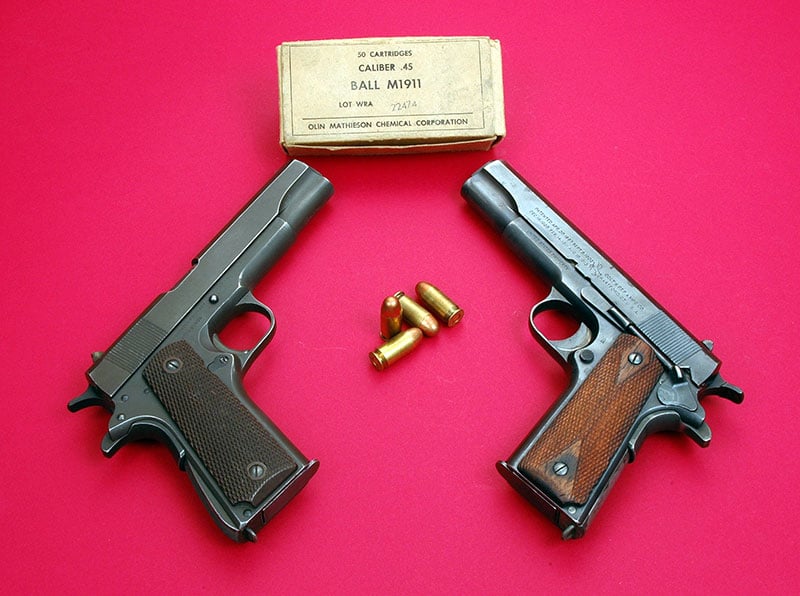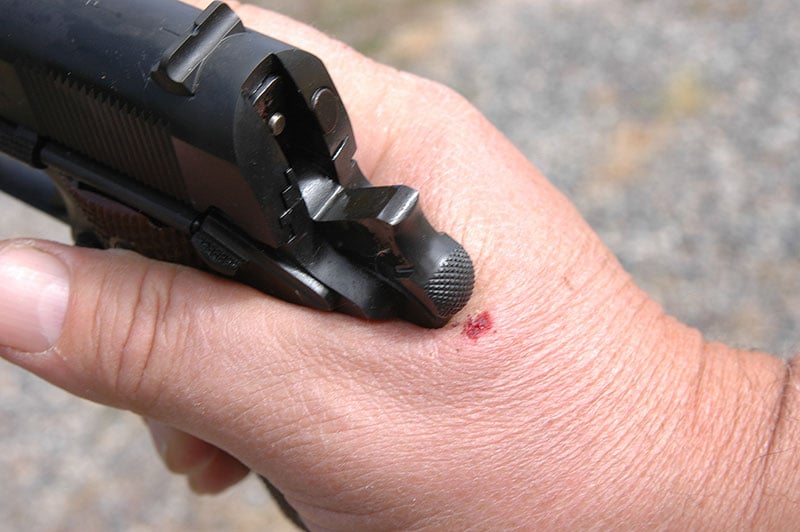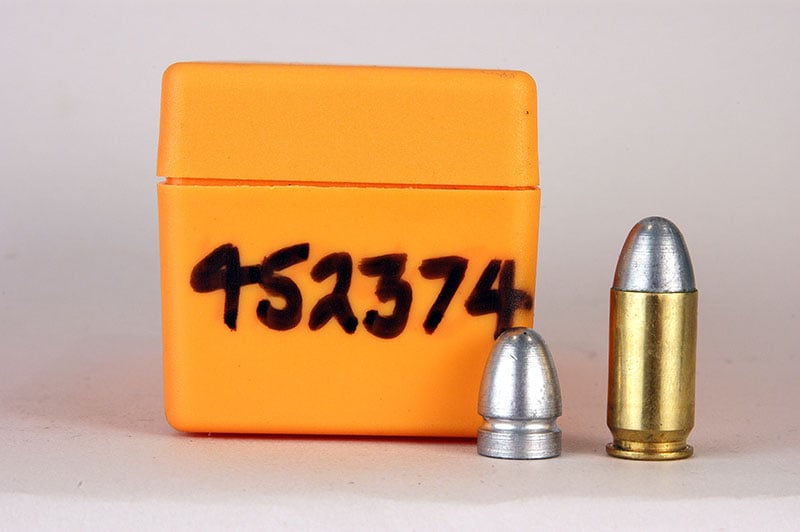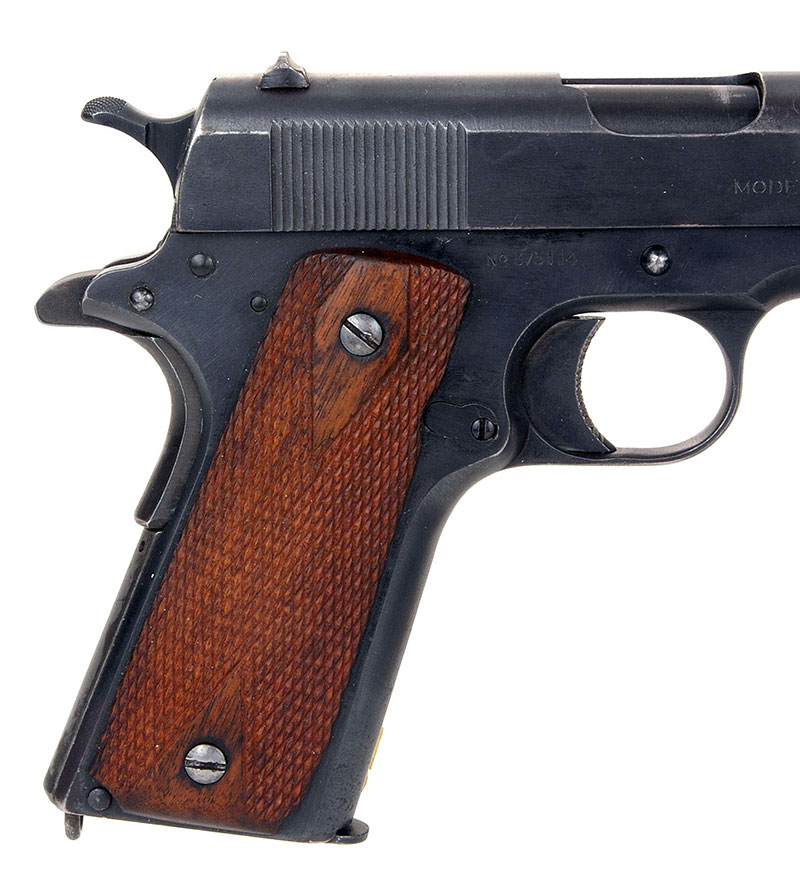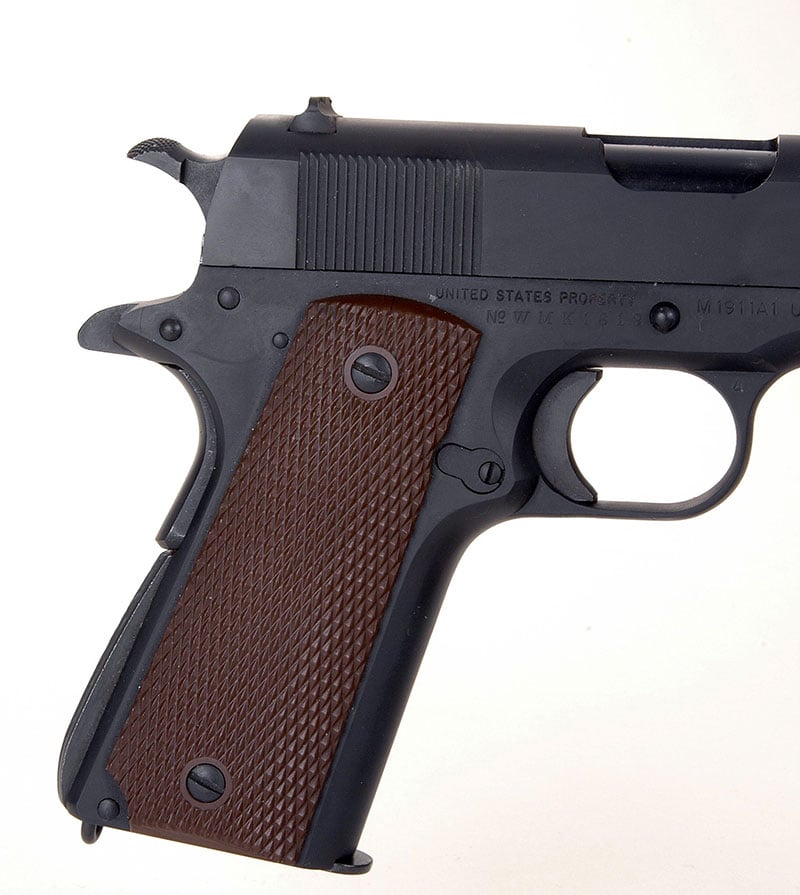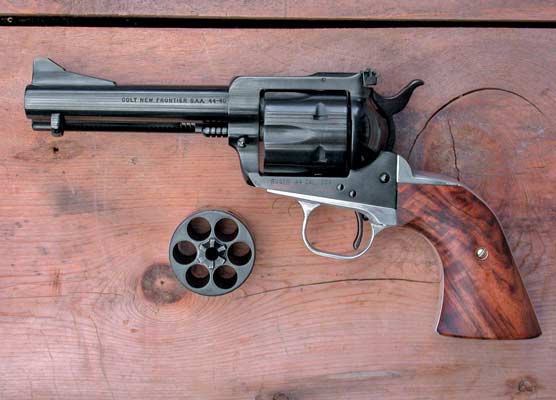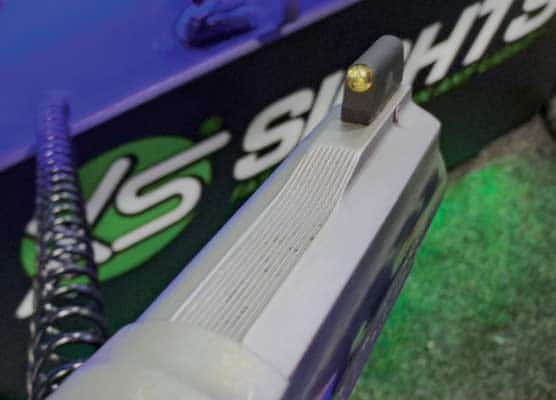Handguns Of WWII, Part 7
U.S. Model 1911/1911A1
Part 7 Of A 13-Part Series
American fighting men anywhere in World War II could have been issued one of two basic .45 caliber pistols. The primary one was the Model 1911A1, and its slightly different predecessor the Model 1911. Changes between the two designations occurred about 1924. They differ in minor details such as the A1 had an arched mainspring housing and the earlier model had a flat one. However, those two items were easily interchanged which can cause confusion. A surer way to discern a sample’s origin is a glance at the frame just behind the trigger. The 1911A1 has bevels there while the 1911 does not. An even more positive way to tell them apart is to just look at the serial number. After serial number 700,000 the U.S. Government considers military owned .45 automatics to be Model 1911A1s but before that they are Model 1911s.
Regardless, both models were basically the same: they chamber the .45 ACP, with magazine capacity of seven rounds, have 5″ barrels, dovetailed rear sights with tiny blade fronts staked into the slide. The only sight adjustment possible is drifting the rear sight in its dovetail for windage. You have to live with the elevation point of impact with military loads using 230 grain FMJ bullets doing a nominal 830 fps.
All 1911/1911A1s were supposedly sighted for 50 yards, but shooters’ eyes and personal firing techniques make that a hit and miss factor — literally! Finish on 1911s was a dull blue, but by World War II 1911A1s were given the Parkerized finish then used on all American military weapons. Grips did change slightly from checkered walnut on pre-World War II ones of either variation to checkered plastic during World War II.
Safeties
One aspect of the 1911/1911A1 differed from all other World War II handguns. That is they have three safeties. One is a half-cock notch for the hammer. The second is a thumb-operated one on the left side of the frame. The third is the grip safety; meaning the pistol cannot fire unless the shooter’s hand is around the grip depressing it. The latter one is a holdover from the horse soldier era, and its purpose was to keep cavalrymen from shooting themselves or their horses.
US military doctrine was that the 1911/1911A1 be carried normally with magazine inserted but with chamber empty. Decades ago an older shooting friend who had served as one of the last US horse soldiers in the early 1940s told me he witnessed at least two cavalry trainees accidentally shooting their horses in the head while doing mounted drills. He couldn’t remember what happened to those miscreants afterwards.
Although the term “1911” in many peoples’ minds is synonymous with “Colt .45 Auto” it is fact these pistols were produced by several other manufacturers both prior to and during World War II. Such companies were Remington Arms, Springfield Armory, Remington Rand, Ithaca, Union Switch & Signal, and even Singer, the sewing machine manufacturer.
During World War II the most prolific manufacturer was Remington Rand, former maker of typewriters; an item declared non-essential to the war effort in 1942. Another fact is after the war ended in 1945 the US Government bought no more .45 Auto pistols, although “standard issue” remained the 1911A1 until the official switch to 9mm began in 1985. That means those remaining in government inventory were used, abused and rebuilt many times. This was aided by the fact John M. Browning wisely incorporated a barrel into his 1911 design that can be replaces in minutes.
Accurate?
Ever since the Model 1911 appeared 100 years ago, stories about how difficult it is to shoot accurately have abounded almost as much as stories about its great stopping power. There is truth and falseness in both legends. For a person with nil handgun shooting experience, the .45 ACP Model 1911’s noise and recoil would make it a very difficult first handgun to master. The 1911 and A1 are also famous for “hammer-bite.” If a shooter has the least bit of extra flesh on his hand in his web the hammer’s spur will take a piece out of it with every shot. That does nothing to help shoot-ability.
The .45 ACP, with its 230 grain bullet, does have stopping power, but it should not be considered magical. That big .45 bullet still needed to be placed on target with care for it to be effective. Consider the matter this way; in a combat situation a dead center hit with a 115 grain 9mm bullet would be better than a fringe hit with a 230 grain .45 caliber bullet. Troops’ dismal shooting performance with .45 ACP handguns was the rationale US ordnance officers gave for developing the M1 Carbine. It was intended to replace pistols entirely, something it never came close to doing.
Fun And Easy To Shoot
My personal experience with 1911s began in 1968. That year a Remington Rand Model 1911A1 came my way. Likely due to my inexperience and the old .45s worn condition, I found shooting it accurately impossible. The old 1911A1 was loose and likely its barrel was worn out too. I could barely keep my home cast bullets (Lyman mould #452374) on the target paper at 25 yards. On that same target I could keep .38 Special bullets from a Smith & Wesson K38 revolver all in the black bullseye.
As a 19-year old college student, neither .45 ACP factory ammunition nor .45 ACP jacketed bullets for reloading were affordable. I traded the old Remington Rand 1911A1off in 1969. Years later and much more a veteran handgun shooter, I’ve obtained good condition Model 1911s and Model 1911A1s and find them among the easiest of big bore handguns to shoot accurately — with either lead alloy or jacketed bullets.
Almost any commercially made and privately owned handgun could have been found stuck in the belt of American combat troops. The Model 1911/1911A1 autoloader (and both brands of Model 1917 revolver) were the only ones I’ve been able to determine were actually issued by the American military to combat infantry.
Click here to links to all the 13-part on-line series of Handguns Of World War 2 articles.


